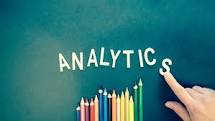Zaloni’s fantastic book, Creating a Data-Driven Organization, is a very well narrated in this book and I like to share our learning with our big data & IoT community.
Many organizations think that simply because they generate a lot of reports or have many dashboards, they are data-driven. Although those activities are part of what an organization does, they are typically backward-looking. That is, they are often a declaration of past or present facts without a great deal of context, without causal explanation of why something has or has not happened, and without recommendations of what to do next. In short, they state what happened but they are not prescriptive. As such, they have limited upside.
In contrast, consider more forward-looking analyses, such as predictive models that optimize ad spend, supply chain replenishment, or minimize customer churn. They involve answering the “why” questions—or more generally, “w-questions”: who, what, when, why, and where—making recommendations and predictions and telling a story around the findings. They are frequently a key driver in a data-driven organization. Those insights and recommendations,if acted upon, have a huge potential impact upon the organization.
However, such insights require collecting the right data, that the data is trustworthy, the analysis is good, that the insights are considered in the decision, and that they drive concrete actions so the potential can be realized. Phew! I call this sequence—the flow from collection to final impact—the analytics value chain.
This last step in the chain is critical. Analytics is not data-driven if its findings are never seriously considered or acted upon. If they are unread, ignored, and the boss is going to do whatever he or she wants to do, regardless of what the data says, then they are ineffectual. To be data-driven, an organization must have the right processes and the right culture in place to augment or drive critical business decisions with these analyses and therefore have a direct impact on the business.
Culture is the key.
This is a multifaceted problem that involves data quality and sharing, analyst hiring and training, communication, analytical organizational structure, metric design, A/B testing, decision-making processes, and more.
Let’s get a couple of obvious prerequisites out of the way.
Prerequisite #1: An organization must be collecting data.
Prerequisite #2: Data must be accessible and queryable, Joinable, Shareable, Queryable
So to conclude data-driven organization requisite, culture can and should be built not only from top-down leadership but also from the bottom and data is the foundation of a data-driven organization.
This article originally appeared here. Republished with permission. Submit your copyright complaints here.












![Top 12 interesting careers to explore in big data [Infographic]](https://crayondata.ai/wp-content/uploads/2016/10/education-1.jpg)

